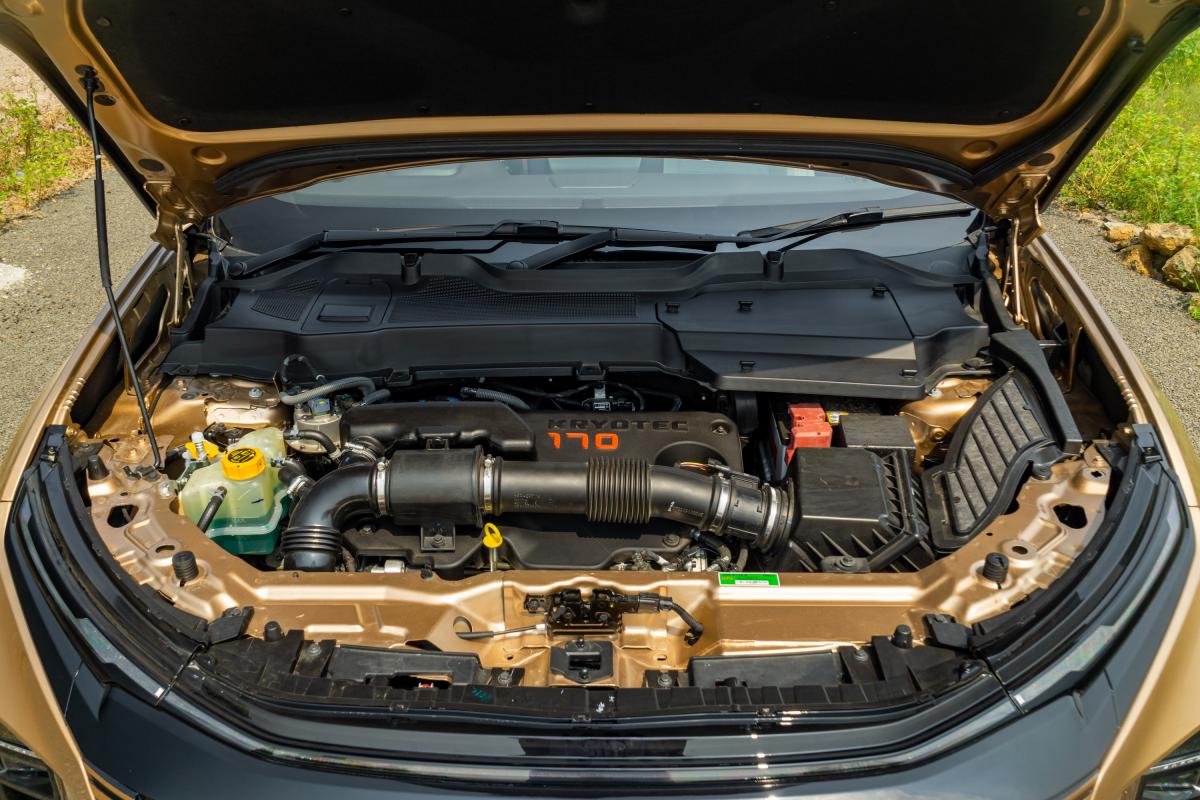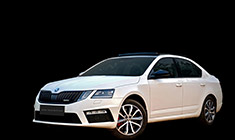News
2023 Tata Safari Facelift : Our observations after a day of driving
This smooth-shifting AT makes the Safari easy to drive in the city. Lift off the brake pedal and the Safari will start crawling forward instantly. The SUV moves off seamlessly from a standstill & there is no lag to speak of.
Driving the Tata Safari 2.0L Diesel AT
Fiat-sourced 1,956cc diesel produces 168 BHP @ 3,750 rpm & 350 Nm @ 1,750-2,500 rpm:

With the 2023 facelift, Tata has carried forward the engine and transmission from the previous car. The engine has a punchy mid-range and the 6-speed AT is smooth which is appreciated by many owners. There’s been only a tiny change, which is that Tata has now switched from a cable shifter to a shift-by-wire system for the gear shifter. This allows them to save some space on the center console and also add paddle shifters.
The Safari is powered by the same 2.0L diesel engine as the Harrier, Compass & Hector. Called "Kryotec170", the motor produces 168 BHP (@ 3,750 rpm) & 350 Nm (@ 1,750 - 2,500 rpm) and is mated to a 6-speed AT. The automatic gearbox has been sourced from Hyundai and is very smooth & competent (like Hyundai ATs, it's not the fastest though). The AT is superbly tuned and enjoys a good partnership with the Kryotec170. This smooth-shifting AT makes the Safari easy to drive in the city. Lift off the brake pedal and the Safari will start crawling forward instantly. The SUV moves off seamlessly from a standstill & there is no lag to speak of. Light accelerator input is all you'll need to commute. The accelerator pedal is also feather-light, which just makes this AT that much nicer to drive. With an easy right foot, the gearbox shifts up early and shift quality is very smooth.
We will say that the AT's overall response time is "average" to "above average". It's not the fastest out there or the most responsive to kickdown commands and there are a few situations where you'll feel it takes longer to downshift than you'd like. That being said, the AT does a good job 98% of the time. The focus has been on smoothness because even when it drops a gear in full kickdown mode, there's no jerk. It's polished.
On the open road, the 168 horses & 350 Nm give the Safari AT enough muscle to please even enthusiastic drivers. Fast drivers won't be left wanting on long expressways. The acceleration is quick enough and there is sufficient punch on tap at all times. This SUV is a capable cruiser that munches miles comfortably, seeing 100 km/h @ a relaxed 1,700 rpm and 120 km/h @ 2,200 rpm. Overtaking slower-moving traffic is an effortless experience too & the Safari AT is a brilliant long-distance companion.
The Safari gets two selectable driving modes (apart from the default "City" mode). Because of the powerful engine, "Eco" mode is genuinely usable. It is not weak or poor at all, and we see owners using it in the city as well as for easy expressway cruising. Added benefit = Because of duller responses, the drive experience is smoothest in Eco. "City" mode is a good balance between the two, but "Sport" mode is the one you want when you're in the mood for some fun / driving fast. The difference in Sport is immediately felt. There is more power available, and the accelerator itself feels so much more responsive. Sport mode keeps the engine hot by maintaining higher revs, thereby making the motor + gearbox more eager.
As mentioned earlier, the manual mode is via paddle shifters. Pulling on any of the paddle shifters automatically engages "Sport" driving mode, although very honestly, manual shifting is pointless in a gargantuan SUV like this. Even when driving aggressively, we found ourselves simply engaging "Sport" and letting the AT do all the work. We foresee owners using "manual mode" very rarely, if at all. It's also tuned conservatively and doesn't allow aggressive downshifts. Uniquely, if the gearbox disagrees with your downshift command, a prompt comes up on the MID telling you that your command has been denied.
Noise, Vibration & Harshness (NVH)
Tata has put in effort to reduce the NVH levels & it shows. Especially after driving it back to back with the Harrier facelift, the difference in NVH levels is very evident. There is a negligible amount of body shake on start up & none on shutdown. The AT shifts up early, hence engine sound isn't a bother when you're driving calmly in the city. Engine noise is not as prominent as the 2020 Harrier, even when the needle starts climbing. The diesel is sufficiently quiet at lower revs. Once past 4,000 rpm, the engine note is sad (even by diesel standards). Road noise and wind noise are also kept in check.
Mileage & Fuel Economy
The Tata Safari facelift has a claimed fuel efficiency of 16.30 km/l for the manual and 14.50 km/l for the automatic version.
Suspension
The Safari is equipped with an independent McPherson strut front suspension with coil springs and an anti-roll bar, while the rear is a semi-independent twist blade design with a Panhard rod. Mechanically there hasn’t been any major except for the switch to Electric Power Steering (like the Harrier facelift) and bigger 19-inch wheels with 245/55 section tyres.
Ride Comfort
The Safari's ride quality is mature but has a firm edge to it. At city speeds, it is compliant enough and the Safari's occupants will be kept comfortable. No owner will complain. Still, it's not what we would call "plush". The sharpness of potholes is obvious inside & you'll feel the suspension's firmness on bad roads (with some side-to-side movement of the cabin too). Those seated in the third row will feel this more than the others. Especially driving it back to back with the Harrier, the difference is very evident. There is more body movement inside the cabin of the Safari compared to the Harrier. The ride is a bit firmer than the Harrier's as well due to the shorter tyre sidewalls. Our test vehicle had 19" wheels, and lesser variants get 17" rims with taller rubber. The ride quality on the 17" wheel variant will be noticeably cushier.
On the highway too, the Safari's ride quality is compliant & adequate. However, you will always be aware of the kind of road you are driving on. What's nice is that the suspension goes about its job silently - it's not clunky or loud.
Steering
Tata’s switch to an electric power steering unit (EPS) for the Safari is more than welcome. The poor calibration of the old hydraulic unit was a fly in the ointment and now that fly is out of the window. The switch to EPS will allow Tata to add features like lane keep assist to ADAS.
The EPS is a nice unit to operate in the city and is very convenient for urban commuting. It’s light at city speeds and weighs up nicely as you build up speed. Switch to Sport mode and the steering gets noticeably heavier. While there is a good amount of heft on the steering wheel, we’d have liked if Tata would have added a bit more heft, especially in Sport mode. While most owners won’t be doing high speed cornering in their Safari, a bit more weight would add a bit of confidence when on twisty roads. What’s good is that the electric power steering is predictable. As an enthusiast, while it may feel a bit artificial, the predictable behaviour allows you to carry more speed into corners as opposed to the outgoing car. While you would still be left wanting some more feedback from the steering, it is direct enough for you to appreciate the calibration.
Handling & Dynamics
Straight line stability is very good, even at high speeds. Additionally, the Safari isn't bouncy at speed and the rear end recovers quite quickly from expressway undulations. Grip levels are satisfactory from the chassis & 245 mm tyres, yet this big & heavy SUV isn't what we’d call a corner carver. Body roll is present, and you feel the car’s height + weight. All of this is fine, and the behaviour is acceptable as long as you drive it like a 7-seater family tourer.
In addition to the switchable engine remaps mentioned in the engine post, the Safari gets a Land Rover-esque terrain response system with two selectable modes (apart from the normal driving mode). Wet Mode is designed for driving in the rain by providing better traction and handling. If you should hit a rough patch on your holiday outings, Tata has you covered there too, with the Rough Road Mode which optimizes the vehicle's behavior on broken roads. Braking performance is also tuned to support rough road surfaces.
Braking
Unlike the Harrier which gets drum brakes at the rear for lower variants, the Safari gets all-wheel disc brake setup as standard across all variants (this was the case on the pre-facelift car as well). ABS, EBD, brake disc wiping, after-impact braking, ESP, hill hold control, traction control and corner stability control are standard on all variants of the Safari.
We jammed the brakes at high speed too and the car stopped straight & true, with no drama. The ABS doesn't kick in unless really necessary (we like it this way). Please note that the bite from the brake pedal is sharp and will take some getting used to when you are new to the car.
Niggles & Problems
We’ve been seeing feature additions and changes in the Safari through different editions since launch. At this point, with the facelift, the Safari is equipped with a lot of electronics and features which is good because that’s what the customers want. However, with an overload of electronics, the chances of things going wrong also increase simultaneously. We didn’t face any major issues with our test car during our drive. The out-of-rhythm indicator ticks were present in the Safari as well.
We would recommend that you do a thorough PDI before taking the delivery to ensure that your car is free of any niggles or issues. Also as always, we recommend that you get the 2-year extended warranty over the standard warranty of 3 years or 1,00,000 km.
Continue reading the discussion on the Tata Safari Facelift on our forum.

























